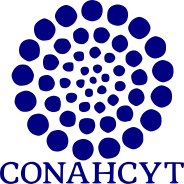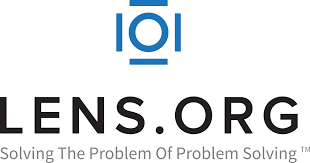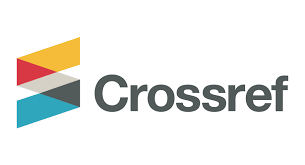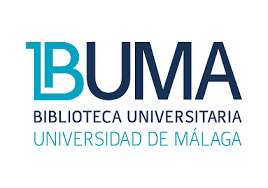EVALUACIÓN in vitro DE PRODUCTOS QUÍMICOS NO CONVENCIONALES PARA EL CONTROL DE Penicillium citrinum.
Palabras clave:
P. citrinum, antifúngico, sistemas alternativos, ajoResumen
El ajo (Allium sativumL.), es un cultivo que esta expuesto al ataque de patógenos importantes del género Penicillium provocando pérdidas económicas importantes. De manera tradicional, la alternativa para controlar fitopatógenos es mediante la aplicación de fungicidas sintéticos. Sin embargo, debido a la aparición de cepas resistentes y problemas ambientales, es necesario la búsqueda de tratamientos alternativos que sean efectivos y amigables con el medio ambiente. En este sentido, el uso de quitosano, peróxido de hidrógeno (H2O2), sorbato de potasio (SP) y bicarbonato de sodio (BS) representa una alternativa amigable con el medio ambiente con propiedades antimicrobianas. En este estudio, P. citrinum fue aislado e identificado mediante herramientas moleculares. En el ensayo in vitro, el H2O2al 0.5%, el BS al 3% y el quitosano al 1% resultaron efectivos en la inhibición del desarrollo del patógeno (crecimiento micelial, esporulación y germinación). Se observó un efecto sinérgico de los tratamientos evaluados en combinación a bajas concentraciones. Por lo tanto, los tratamientos evaluados pueden ser una alternativa viable y amigable con el medio ambiente el control de P. citrinumen ajo.
Referencias
Barnett, H. L., & Hunter, B. B. (1998). Illustrated genera of imperfect fungi. American Phytopathological Society (APS Press). https://doi.org/https://doi.org/10.1007/s00299-007-0368-x
Cavagnaro, P. F., Camargo, A., Piccolo, R. J., Lampasona, S. G., Burba, J. L., & Masuelli, R. W. (2005). Resistance to Penicilliumhirsutum Dierckx in garlic accessions. European Journal of Plant Pathology, 112(2), 195–199.
Chávez-Magdaleno, Mireya Esbeiddy, G.-E. R. R., Maribel, A. R., & Gutie, P. P. (2018). Effect of pepper tree ( Schinus molle ) essential oil-loaded chitosan bio-nanocomposites on postharvest control of Colletotrichum gloeosporioides and quality evaluations in avocado ( Persea americana ) cv . Hass. https://doi.org/10.1007/s10068-018-0410-5
Doyle, J. J., & Doyle, J. L. (1990). Isolation ofplant DNA from fresh tissue. Focus, 12(13), 39–40.
Finnegan, M., Linley, E., Denyer, S. P., McDonnell, G., Simons, C., & Maillard, J.-Y. (2010). Mode of action of hydrogen peroxide and other oxidizing agents: differences between liquid and gas forms. Journal of Antimicrobial Chemotherapy, 65(10), 2108–2115.
Fuentes, Y. M. O., Ortiz, J. C. D., Chávez, E. C., Castillo, F. D. H., Olivas, A. F., Morales, G. G., & Guerra, R. R. (2013). The first report of Fusarium proliferatum causing garlic bulb rots in Mexico. African Journal of Agricultural Research, 8(6), 570–573.
Gregori, R., Borsetti, F., Neri, F., Mari, M., & Bertolini, P. (2008). Effects of potassium sorbate on postharvest brown rot of stone fruit. Journal of Food Protection, 71(8), 1626–1631.
Gutierrez-Martinez, P., Ledezma-Morales, A., Del, L., Romero-Islas, C., Ramos-Guerrero, A., Romero-Islas, J., & González-Estrada, R. (2018). Antifungal Activity of Chitosan against Postharvest Fungi of Tropical and Subtropical Fruits. https://doi.org/10.5772/intechopen.76095
Hernández-Lauzardo, A. N., Hernández-Martínez, M., Velázquez-del Valle, M.G., Guerra-Sánchez, M.G. y Melo-Giorgana, G. E. (2007). Actividad Antifúngica del Quitosano en el Control de Rhizopus stolonifer ( Ehrenb .: Fr .) Vuill. y Mucor spp. Revista Mexicana de Fitopatología, 25(September), 109–113.
Hernández-López, M., Guillén-Sánchez, J., Bautista-Baños, S., & Guillén-Sánchez, D. (2018). Evaluation of biodegradable films for postharvest control of fungi in papaya. Cultivos Tropicales, 39(1), 52–60.
Kong, M., Chen, X. G., Xing, K., & Park, H. J. (2010). Antimicrobial properties of chitosan and mode of action: a state of the art review. International Journal of Food Microbiology, 144(1), 51–63. https://doi.org/https://doi.org/10.1016/j.ijfoodmicro.2010.09.012
Lai, T., Bai, X., Wang, Y., Zhou, J., Shi, N., & Zhou, T. (2015). Inhibitory effect of exogenous sodium bicarbonate on development and pathogenicity of postharvest disease Penicillium expansum. Scientia Horticulturae, 187, 108–114.
Li, H., Wang, Y., Liu, F., Yang, Y., Wu, Z., Cai, H., & Li, P. (2015). Effects of chitosan on control of postharvest blue mold decay of apple fruit and the possible mechanisms involved. Scientia Horticulturae, 186, 77–83.
Li, Y., & Wu, C. (2013). Enhanced inactivation of Salmonella Typhimurium from blueberries by combinations of sodium dodecyl sulfate with organic acids or hydrogen peroxide. Food Research International, 54(2), 1553–1559.
Macías-Duarte, R., Grijalva-Contreras, R. L., & Robles-Contreras, F. (2010). Productividad y calidad de variedades de ajo (Allium sativium L.) bajo condiciones desérticas en Caborca, Sonora. Biotecnia, 12(1), 44–54.
Mejía-Teniente, L., Durán-Flores, F. de D., Chapa-Oliver, A., Torres-Pacheco, I., Cruz-Hernández, A., González-Chavira, M., & Guevara-González, R. (2013). Oxidative and molecular responses in Capsicum annuum L. after hydrogen peroxide, salicylic acid and chitosan foliar applications. International Journal of Molecular Sciences, 14(5), 10178–10196.
Minibayeva, F., Beckett, R. P., & Kranner, I. (2015). Roles of apoplastic peroxidases in plant response to wounding. Phytochemistry, 112, 122–129.
Ngo, D.-H., Vo, T.-S., Ngo, D.-N., Kang, K.-H., Je, J.-Y., Pham, H. N.-D., … Kim, S.-K. (2015). Biological effects of chitosan and its derivatives. Food Hydrocolloids, 51, 200–216. https://doi.org/10.1016/j.foodhyd.2015.05.023
Ochoa Fuentes, Y. M., Cerna Chávez, E., Gallegos Morales, G., Landeros Flores, J., Delgado Ortiz, J. C., Hernández Camacho, S., & Olalde Portugal, V. (2012). Identificación de especies de Fusarium en semilla de ajo en Aguascalientes, México. Revista Mexicana de Micología, 36, 27–32.
Overy, D. P., Valdez, J. G., & Frisvad, J. C. (2005). Revisions to Penicillium ser. Corymbifera : agents responsible for blue mould storage rot of various flower and vegetable bulbs. Canadian Journal of Botany, 83(11), 1422–1433. https://doi.org/10.1139/b05-110
Patón, L. G., Marrero, M. D. R., & Llamas, D. P. (2017). In vitro and field efficacy of three fungicides against Fusarium bulb rot of garlic. European Journal of Plant Pathology, 148(2), 321–328.
Qin, C. Q., Du, Y. M., & Xiao, L. (2002). Effect of hydrogen peroxide treatment on the molecular weight and structure of chitosan. Polymer Degradation and Stability, 76(2), 211–218.
Qin, G., Liu, J., Cao, B., Li, B., & Tian, S. (2011). Hydrogen peroxide acts on sensitive mitochondrial proteins to induce death of a fungal pathogen revealed by proteomic analysis. PLoS One, 6(7), e21945.
Ramos-Guerrero, A., González-Estrada, R. R., Hanako-Rosas, G., Bautista-Baños, S., Acevedo-Hernández, G., Tiznado-Hernández, M. E., & Gutiérrez-Martínez, P. (2018). Use of inductors in the control of Colletotrichum gloeosporioides and Rhizopus stolonifer isolated from soursop fruits: in vitro tests. Food Science and Biotechnology, 1–9. https://doi.org/10.1007/s10068-018-0305-5
Reddy, M. V. B., Arul, J., Ait Barka, E., Angers, P., Richard, C., & Castaigne, F. (1998). Effect of chitosan on growth and toxin production by Alternaria alternata f.sp. lycopersici. Biocontrol Science and Technology, 8(November), 33–43. https://doi.org/10.1080/09583159830414
Singh, D., & Sharma, R. R. (2018). Postharvest diseases of fruits and vegetables and their management. In Postharvest Disinfection of Fruits and Vegetables (pp. 1–52). Elsevier.
Smilanick, J. L., Mansour, M. F., Gabler, F. M., & Sorenson, D. (2008). Control of citrus postharvest green mold and sour rot by potassium sorbate combined with heat and fungicides. Postharvest Biology and Technology, 47(2), 226–238. https://doi.org/10.1016/j.postharvbio.2007.06.020
Stanojevic, D., Comic, L., Stefanovic, O., & Solujic-Sukdolak, S. (2009). Antimicrobial effects of sodium benzoate, sodium nitrite and potassium sorbate and their synergistic action in vitro. Bulg J Agric Sci J, 15(4), 307–311.
Upadhyay, A., Upadhyaya, I., Kollanoor-Johny, A., Baskaran, S. A., Mooyottu, S., Karumathil, D., & Venkitanarayanan, K. (2013). Inactivation of Listeria monocytogenes on frankfurters by plant-derived antimicrobials alone or in combination with hydrogen peroxide. International Journal of Food Microbiology, 163(2–3), 114–118.
Visagie, C. M., Houbraken, J., Frisvad, J. C., Hong, S.-B., Klaassen, C. H. W., Perrone, G., & Samson, R. A. (2014). Identification and nomenclature of the genus Penicillium. Studies in Mycology, 78, 343–371.
Wang, L., Wu, H., Qin, G., & Meng, X. (2014). Chitosan disrupts Penicillium expansum and controls postharvest blue mold of jujube fruit. Food Control, 41, 56–62.
White, T. J., Bruns, T., Lee, S., & Taylor, J. L. (1990). Amplification and direct sequencing of fungal ribosomal RNA genes for phylogenetics. PCR Protocols: A Guide to Methods and Applications, 18(1), 315–322.
Yahyazadeh, M., Omidbaigi, R., Zare, R., & Taheri, H. (2008). Effect of some essential oils on mycelial growth of Penicillium digitatum Sacc. World Journal of Microbiology and Biotechnology, 24(8), 1445–1450. https://doi.org/10.1007/s11274-007-9636-8
Yao, H., Tian, S., & Wang, Y. (2004). Sodium bicarbonate enhances biocontrol efficacy of yeasts on fungal spoilage of pears. International Journal of Food Microbiology, 93(3), 297–304.
Youssef, K., Ligorio, A., Sanzani, S. M., Nigro, F., & Ippolito, A. (2012). Control of storage diseases of citrus by pre- and postharvest application of salts. Postharvest Biology and Technology, 72(9), 57–63. https://doi.org/10.1016/j.postharvbio.2012.05.004
Youssef, K., & Roberto, S. R. (2014). Applications of salt solutions before and after harvest affect the quality and incidence of postharvest gray mold of ‘Italia’ table grapes. Postharvest Biology and Technology, 87, 95–102. https://doi.org/10.1016/j.postharvbio.2013.08.011
Descargas
Archivos adicionales
Publicado
Número
Sección
Licencia

Polibotánica por Departamento de Botánica de la Escuela Nacional de Ciencias Biológicas del Instituto Politécnico Nacional se distribuye bajo una Licencia Creative Commons Atribución-NoComercial-CompartirIgual 4.0 Internacional.




















